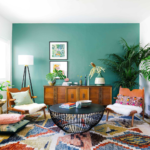
Transforming your outdoor space into a cozy and stylish retreat is easier than you might think. Building your own outdoor furniture not only allows you to customize pieces to fit your space perfectly, but it also adds a personal touch to your backyard, patio, or garden. Whether you’re a seasoned DIY enthusiast or just getting started, this guide will walk you through some beginner-friendly projects and tips for creating beautiful and functional outdoor furniture.
1. Planning Your Outdoor Furniture Projects
Before diving into your first project, it’s essential to plan your outdoor furniture to ensure it meets your needs and suits your space:
- Assess Your Space: Measure your outdoor area to determine how much room you have for furniture. Consider the layout and flow, making sure there’s enough space for movement and other outdoor activities.
- Choose Your Materials: Outdoor furniture needs to withstand the elements, so choose materials that are durable and weather-resistant. Cedar, teak, and pressure-treated lumber are great options for wood, while metal, concrete, and weather-resistant fabric are also popular choices.
- Design with Purpose: Think about how you plan to use your outdoor space. Do you need a dining set for entertaining, lounge chairs for relaxing, or a sturdy bench for seating? Tailor your projects to your lifestyle and preferences.
- Create a Budget: Set a budget for your projects, including the cost of materials, tools, and any accessories you might want to add, like cushions or umbrellas.
2. Essential Tools and Materials
Here’s a list of basic tools and materials you’ll need to get started with DIY outdoor furniture:
- Tools:
- Measuring tape
- Circular saw or handsaw
- Drill with various bits
- Hammer
- Screwdrivers (flathead and Phillips)
- Clamps
- Sander or sandpaper
- Level
- Wood glue
- Safety gear (gloves, goggles, ear protection)
- Materials:
- Weather-resistant wood (cedar, teak, pressure-treated pine)
- Outdoor screws and nails
- Outdoor wood glue
- Sandpaper (various grits)
- Outdoor paint or stain
- Sealant or varnish for added protection
- Weather-resistant fabric (if making cushions)
3. Beginner-Friendly Outdoor Furniture Projects
If you’re new to woodworking, start with simple projects that require basic tools and skills. Here are a few ideas:
A. DIY Adirondack Chair
An Adirondack chair is a classic outdoor piece that’s perfect for lounging. It’s a great beginner project because it involves basic cuts and assembly.
- Materials:
- Cedar or pressure-treated pine boards (cut to size)
- Outdoor screws
- Wood glue
- Sandpaper
- Outdoor paint or stain
- Steps:
- Cut the Wood: Cut the boards according to your Adirondack chair plans. You’ll need pieces for the backrest, seat, legs, and arms.
- Assemble the Frame: Start by assembling the seat and backrest, using screws and wood glue for added stability. Attach the legs and arms.
- Sand and Finish: Sand the entire chair to smooth any rough edges. Apply a coat of outdoor paint or stain to protect the wood from the elements.
- Seal the Wood: Once the paint or stain is dry, apply a clear outdoor sealant to extend the chair’s life.
B. Simple Outdoor Bench
A wooden bench is a versatile piece that can be used in a garden, on a porch, or by a fire pit.
- Materials:
- Pressure-treated pine or cedar boards
- Outdoor screws
- Wood glue
- Sandpaper
- Outdoor paint or stain
- Steps:
- Build the Base: Cut the wood to size and assemble the legs and supports using screws and wood glue.
- Add the Seat: Attach a wide plank for the seat, making sure it’s securely fastened to the supports.
- Sand and Finish: Sand the bench to remove any rough spots, then apply your choice of paint or stain. Finish with a sealant to protect against moisture.
C. DIY Pallet Sofa
A pallet sofa is an affordable and easy-to-build project that adds rustic charm to your outdoor space.
- Materials:
- Wooden pallets (clean and sanded)
- Outdoor screws
- Cushions or foam pads
- Outdoor fabric
- Steps:
- Prepare the Pallets: Clean and sand the pallets to remove any splinters or rough spots.
- Assemble the Sofa: Stack and secure the pallets to create the base of the sofa. You can stack two or three pallets for a comfortable seat height.
- Add the Backrest: Attach another pallet vertically to serve as the backrest. Secure it with screws.
- Create Cushions: Cut foam pads to fit the seating area and cover them with weather-resistant fabric. Place the cushions on the sofa for comfort.
4. Intermediate Outdoor Furniture Projects
Once you’ve mastered some basic projects, you can move on to more complex builds that require advanced skills and tools:
A. Outdoor Dining Table
An outdoor dining table is a great project for those who love to entertain. Building your own allows you to customize the size and style to fit your space.
- Materials:
- Hardwood lumber (teak or cedar is ideal)
- Outdoor screws and bolts
- Wood glue
- Sandpaper
- Outdoor stain or paint
- Clear sealant
- Steps:
- Build the Tabletop: Cut the lumber to size and assemble the tabletop using screws and wood glue. For a smooth finish, make sure the boards are flush and level.
- Construct the Legs and Supports: Build the legs and attach them to the tabletop using bolts for added strength. Add cross supports for stability.
- Sand and Finish: Sand the entire table, then apply a stain or paint to protect the wood. Finish with a clear sealant to protect against weathering.
B. Lounge Chair with Adjustable Back
This project is perfect for creating a comfortable and stylish spot to relax in the sun.
- Materials:
- Cedar or teak wood
- Outdoor screws and bolts
- Adjustable hinges
- Wood glue
- Sandpaper
- Outdoor stain or paint
- Steps:
- Build the Frame: Cut the wood to size and assemble the frame for the chair. Attach the seat and backrest using screws and glue.
- Install the Adjustable Back: Attach the backrest to the frame with adjustable hinges, allowing you to change the angle for comfort.
- Sand and Finish: Sand the chair to smooth any rough spots, then apply a finish to protect the wood.
5. Finishing Touches and Maintenance
Once your outdoor furniture is built, it’s important to protect and maintain it to ensure it lasts for years to come:
- Finishing: Apply a weather-resistant finish to all wood surfaces. This could be paint, stain, or a clear sealant. For extra protection, consider applying multiple coats.
- Cushions: If your furniture includes cushions, choose weather-resistant fabric and foam. Consider storing cushions indoors when not in use to prolong their lifespan.
- Regular Maintenance: Clean your outdoor furniture regularly to prevent dirt and mildew buildup. Reapply finish or sealant every few years, or as needed, to keep the wood in good condition.
- Covering: Invest in furniture covers to protect your pieces from the elements when they’re not in use.
6. Advanced Techniques and Ideas
As you gain confidence and experience, you can explore more advanced techniques and ideas for your outdoor furniture:
- Incorporate Metal: Combine wood with metal elements like steel or aluminum for a modern, industrial look. Welding or metalworking skills can be helpful for these projects.
- Add Built-In Storage: Create multi-functional furniture with built-in storage, such as a bench with hidden compartments or a table with shelves.
- Experiment with Concrete: Concrete is a durable material that pairs well with wood. You can create concrete tabletops, planters, or even entire benches.
Conclusion
Building your own outdoor furniture is a fun and rewarding way to enhance your outdoor living space. Whether you start with a simple bench or take on a more complex project like a dining table, the process allows you to create pieces that reflect your style and meet your needs. With the right tools, materials, and a bit of creativity, you can transform your backyard, patio, or garden into a comfortable and inviting oasis.
Happy building!







